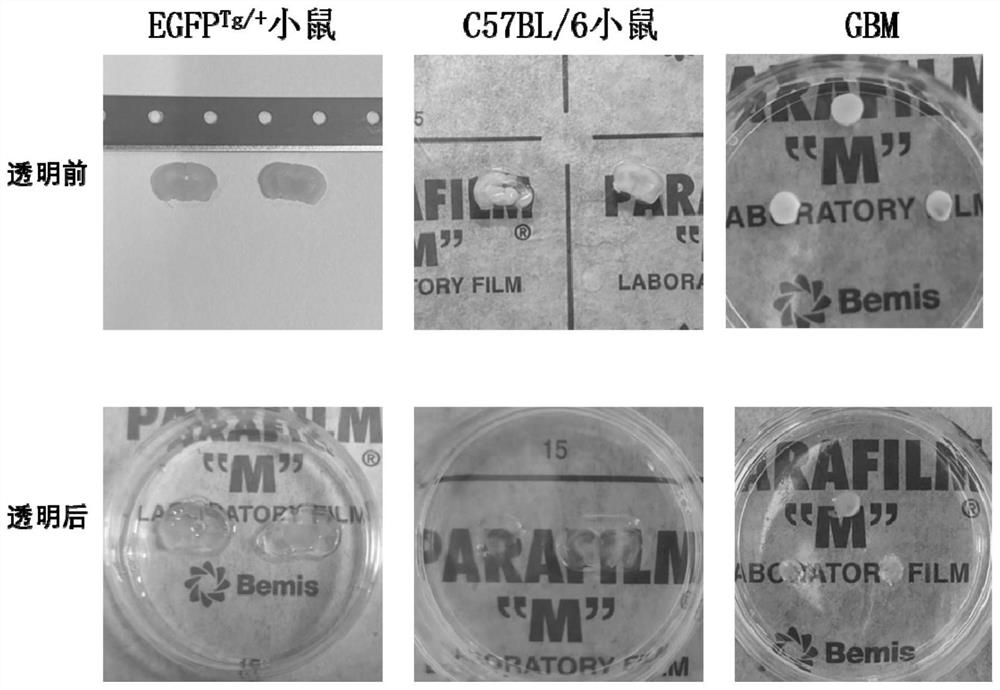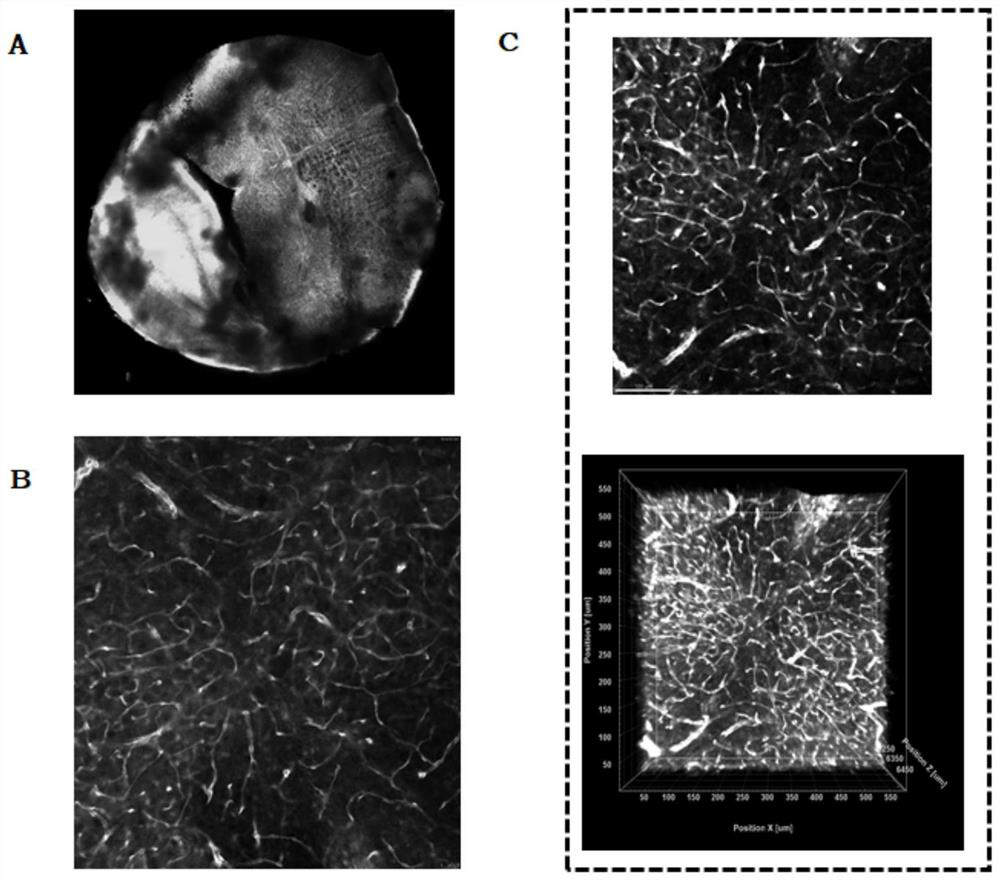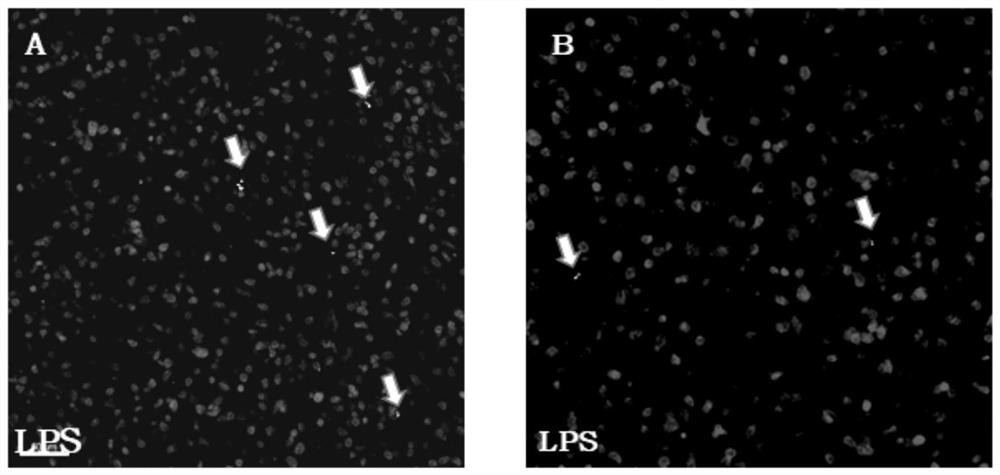Application of combination of tissue transparentizing method and histological method to detection of bacteria in tumor
A histological and transparent technology, applied in the field of detection, can solve the problem of misreading the number and location of bacteria, and achieve the effect of increasing accuracy and reducing false positives.
- Summary
- Abstract
- Description
- Claims
- Application Information
AI Technical Summary
Problems solved by technology
Method used
Image
Examples
Embodiment 1
[0055] A method for detecting bacteria in gliomas in combination with a tissue clearing method and an immunofluorescent labeling method, comprising the following steps:
[0056] 1) Prepare OPTIClear tissue clearing reagent (mix 20% (w / v) N-methylglucamine (Sigma-Aldrich #66930), 32% (w / v) isohexyl alcohol (Sigma-Aldrich #D2158) and 25% - Thiodiethanol (TDE) (Sigma-Aldrich #88559) solution was mixed, and the pH of the solution was adjusted to 7) with concentrated hydrochloric acid, and then sodium dodecyl sulfate (SDS) detergent was dissolved in OPTIClear tissue clearing reagent to obtain the concentration 4% SDS-OPTIClear mixture (SDS:OPTIClear=4:100);
[0057] 2) Transfer the glioma tissue slices obtained above into a sterile EP tube, add SDS-OPTIClear mixed solution, so that the glioma tissue slices are soaked in the SDS-OPTIClear mixed solution, and the tissue slices are mixed with the SDS-OPTIClear mixed solution The volume ratio is 1:3, incubate at 37°C for 1-3 days, the...
Embodiment 2
[0071] An immunohistochemical method (IHC) is applied to the detection method of bacteria in human glioma, which comprises the following steps:
[0072] (1) Preparation of paraffin sections: The fixed human glioma samples were dehydrated and embedded in paraffin (dehydration: cherry blossom, VIPJ-JR; embedding: cherry blossom, TEC-5), and serial sections with a thickness of 4 μm were obtained (Leica , RM2245);
[0073] (2) Paraffin sections were dewaxed to water: put the sections in xylene I for 15 minutes, xylene II for 15 minutes, xylene III for 15 minutes, absolute ethanol I for 5 minutes, absolute ethanol II for 5 minutes, 85% alcohol for 5 minutes, and 75% alcohol for 5 minutes , and then washed with distilled water;
[0074] (3) Antigen retrieval: Place the tissue slices in a repair box filled with citric acid antigen retrieval buffer (PH6.0) for antigen retrieval in a microwave oven, heat for 8 minutes to boil, stop fire for 8 minutes, keep warm and then turn to medium...
Embodiment 3
[0083] An immunofluorescence method (IF) is applied to the detection method of bacteria in human glioma, which comprises the following steps:
[0084] (1) Preparation of tissue sections: The fixed human glioma samples were dehydrated and embedded in paraffin (dehydration: Cherry Blossom, VIPJ-JR; embedding: Sakura Blossom, TEC-5) to obtain serial sections with a thickness of 4 μm (Leica, RM2245), that is, paraffin section;
[0085] (2) Dewaxing and hydration of paraffin sections: put the sections in xylene I for 10 minutes, xylene II for 10 minutes, xylene III for 10 minutes, absolute ethanol for 5 minutes, 95% alcohol for 5 minutes, 85% alcohol for 5 minutes and 75% alcohol for 5 minutes, then Wash with distilled water 3 times, 5min each time;
[0086] (3) Antigen retrieval: Place the tissue slices in a repair box filled with citric acid antigen retrieval buffer (PH6.0) for antigen retrieval in a microwave oven, heat for 5 minutes to boil, stop fire for 5 minutes, keep warm ...
PUM
| Property | Measurement | Unit |
|---|---|---|
| Thickness | aaaaa | aaaaa |
Abstract
Description
Claims
Application Information
 Login to View More
Login to View More - R&D
- Intellectual Property
- Life Sciences
- Materials
- Tech Scout
- Unparalleled Data Quality
- Higher Quality Content
- 60% Fewer Hallucinations
Browse by: Latest US Patents, China's latest patents, Technical Efficacy Thesaurus, Application Domain, Technology Topic, Popular Technical Reports.
© 2025 PatSnap. All rights reserved.Legal|Privacy policy|Modern Slavery Act Transparency Statement|Sitemap|About US| Contact US: help@patsnap.com



